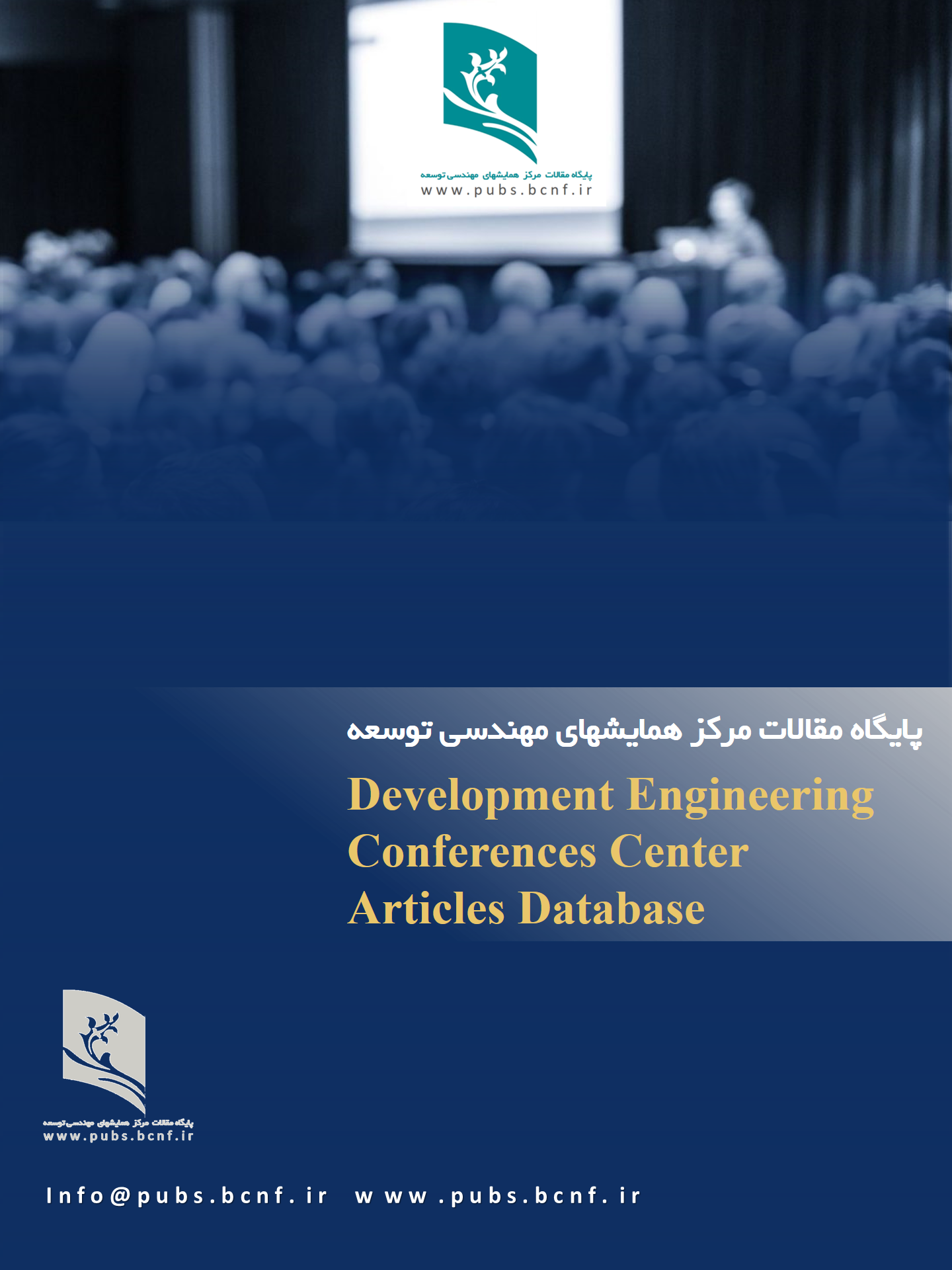ماساژ و بهداشت روان: تأثیرات مثبت بر سلامت ذهن و کاهش اضطراب
Keywords:
ماساژ درمانی, سلامت روان, روش های درمانی مکمل, بهبود خلق و خو, کیفیت زندگیAbstract
این مقاله به بررسی تأثیرات مثبت ماساژ درمانی بر سلامت روان و کاهش اضطراب در افراد میپردازد. با توجه به افزایش شیوع اختلالات روانی و استرس در جوامع مدرن، به ویژه در دوران پاندمی COVID-19، اهمیت توجه به روشهای درمانی مکمل و غیر دارویی بیش از پیش احساس میشود. هدف اصلی این تحقیق شناسایی و تحلیل نقش ماساژ درمانی به عنوان یک ابزار مؤثر در بهبود سلامت روان و کاهش علائم اضطراب و استرس است. در این مطالعه، از روشهای تحقیق کیفی و کمی بهرهگیری شده و دادهها از طریق بررسیهای میدانی و تحلیل دقیق مقالات علمی معتبر جمعآوری گردیده است. نتایج نشان میدهند که ماساژ درمانی میتواند به طور قابل توجهی به کاهش سطح اضطراب، بهبود خلق و خو و افزایش احساس آرامش در افراد کمک کند. این تحقیق همچنین به بررسی مکانیزمهای فیزیولوژیکی و روانشناختی مؤثر در این فرآیند میپردازد. به عنوان مثال، تأثیر ماساژ بر سیستم عصبی و کاهش هورمونهای مرتبط با استرس، مانند کورتیزول، از جمله موضوعات مورد بررسی در این مقاله است. نتایج به دست آمده نشان میدهند که ماساژ درمانی نه تنها به عنوان یک روش تسکیندهنده مؤثر در کاهش اضطراب عمل میکند، بلکه میتواند به بهبود سلامت عمومی و افزایش رضایت از زندگی نیز کمک کند. در نهایت، این مقاله به اهمیت استفاده از روشهای درمانی مکمل در مدیریت سلامت روان تأکید کرده و پیشنهاداتی برای تحقیقات آینده و کاربردهای عملی ماساژ درمانی در حوزه بهداشت روان ارائه میدهد. این یافتهها میتوانند به متخصصان حوزه سلامت و درمانگران کمک کنند تا از ماساژ درمانی به عنوان یک ابزار مؤثر در برنامههای درمانی خود بهرهبرداری کنند.
Downloads
References
1. American Massage Therapy Association. Massage therapy fact sheet. Retrieved 02.09.09, from: http://www.amtamassage. org/news/06factsheet.html.
2. Beider, S., Moyer, C.A., 2007. Randomized controlled trials of pediatric massage: a review. Evidence-Based Complementary and Alternative Medicine 4, 23e34.
3. Committee on the Use ofComplementary and Alternative Medicine. 2005. Complementary andAlternative Medicine in the United States. Washington, DC; The National Academies Press.
4. Centers for Disease Control and Prevention. (2020, September 23). Products - data briefs - number 380 - September 2020. Centers for Disease Control and Prevention. https://www.cdc.gov/nchs/products/databriefs/db380.htm
5. Caruso, C. (2023, January 19). A new field of neuroscience aims to map connections in the brain. Harvard Medical School. https://hms.harvard.edu/news/new-field-neuroscience-aims-mapconnections brain
6. Ehrenfeld, T., 2008. Five surprising benefits of massage. Newsweek Web Exclusive. Retrieved 12.03.10, from: http://www. newsweek.com/id/157196.
7. Effect of Psycho-Regulatory Massage Therapy on Pain and Depression in Women with Chronic and/or Somatoform Back Pain: A Randomized Controlled Trial - PubMed (nih.gov)
8. Field TM. 1998. Massage Therapy Effects. Am Psychol, 53[12]:1270-1281.
9. Furlan, A.D., Imamura, M., Dryden, T., Irvin, E., 2008. Massage for low-back pain. Cochrane Database Systems 3. doi: 10.1002/14651858.CD001929.pub2.
10. Field, T.M., 1998. Massage therapy effects. American Psychologist 53, 1270e1281.
11. Field, T., Hernandez-Reif, M., Diego, M., Schanberg, S., Kuhn, C., 2005. Cortisol decreases and serotonin and dopamine increase following massage therapy. International Journal of Neuroscience 115, 1397e1413.
12. Florida Academy. (2022, July 29). History of massage therapy: Natural healers since 5000 Years. https://florida-academy.edu/history-of-massage-therapy/
13. Gupta, S., 2008. Just what the doctor ordered: a massage. Time Daily. Retrieved 12.03.10, from: http://www.time.com/time/specials/ 2007/article/0,28804,1703763_1703764_1852306,00.html.
14. Hall HL, Munk NK, Carr BH, Fogarty SR, Cant RB, Holton SR, Weller CL, Lauche RM. Maternal mental health and partner-delivered massage: A pilot study. Women Birth. 2021 May;34(3):e237-47.
15. Home. Sense Massage Therapy. (n.d.). https://www.sensemassage.co.uk/blog/75-thephysiological-effects-of-massage-on-the-body
16. Irwin M, Brown M, Patterson T, Hauger R, Mascovich A and Grant I. 1991. Neuropeptide Y and natural killer cell activity; findings in depression and Alzheimer caregiver stress. FASEBJ, 5[ 15]; 3100.
17. Kavuncu V and Evcik D. 2004. Physiotherapy in Rheumatoid Arthritis. Medscape General Medicine, 6[2]: 3.
18. Kaye AD, Kaye AJ, Swinford J, Baluch A, Bawcom BA, Lambert TJ and Hoover JM. 2008. The effeet of deep-tissue massage therapy on blood pressure and heart rate. JAltern Complement Med, 14[2]; 125-8.
19. Kenner D. 2002. Chronic Fatigue Syndrome and Natural Killer Cells; How stress affects anxiety, fatigue, and chronic illness. Immune Support.
20. Lewis, K.K., March 8 2007. Massage: it’s real medicine. Health Magazine Retrieved 02.09.09, from: http://www.cnn.com/ 2007/HEALTH/03/08/healthmag.massage/.
21. Moyer, C.A., Rounds, J., Hannum, J.W., 2004. A meta-analysis of massage therapy research. Psychological Bulletin 130, 3e18.
22. Trombley J, Thomas B and Mosher-Ashley P. 2003. Massage Therapy for Elder Residents. Nursing Homes, 52[10]: 93.
23. Tsukanov lu.T and Tsukanov A.Iu. 2007. The results ofpulsed compression therapy by pneumatic massage in patients with chronic venous insufficiency. Angiol SosudKhir, 13 [2]: 63.
24. Tiffany Field. "Pediatric massage therapy research: A narrative review." Children (Basel) 2019 Jun; 6(6): 78.
25. University of Konstanz. “Ten minutes of massage or rest will help your body fight stress.” ScienceDaily. September 2020. http://www.sciencedaily.com/releases/2020/09/200918104305.htm
26. Westlake, J., 2009. Beating those yuletide blues. Los Angeles Times online. Retrieved 12.03.10 from: http://www.latimes.com/snshealth-holiday-beating-yuletide-blues,0,5512424.story.
27. Wilczynska, Lysak-Radomska, Podczarska-Glowacka, Jolanta Zajt, Dornowski, Skonieczny "Evaluation of the effectiveness of relaxation in lowering the level of anxiety in young adults." Int J Occup Med Environ Health2019;32(6):817-824.
28. Yorio, N., 2009. Cold and flu? Not you! Redbook 209 (6), 110.
29. Zghihong, Bauer, Aaberg, Pool, Van Rooy, Schroeder, Finney. “Benefits of hand massage on anxiety in preoperative outpatient: A quasi-experimental study with pre- and post-tests.” https://pubmed.ncbi.nlm.nih.gov/32919894/



